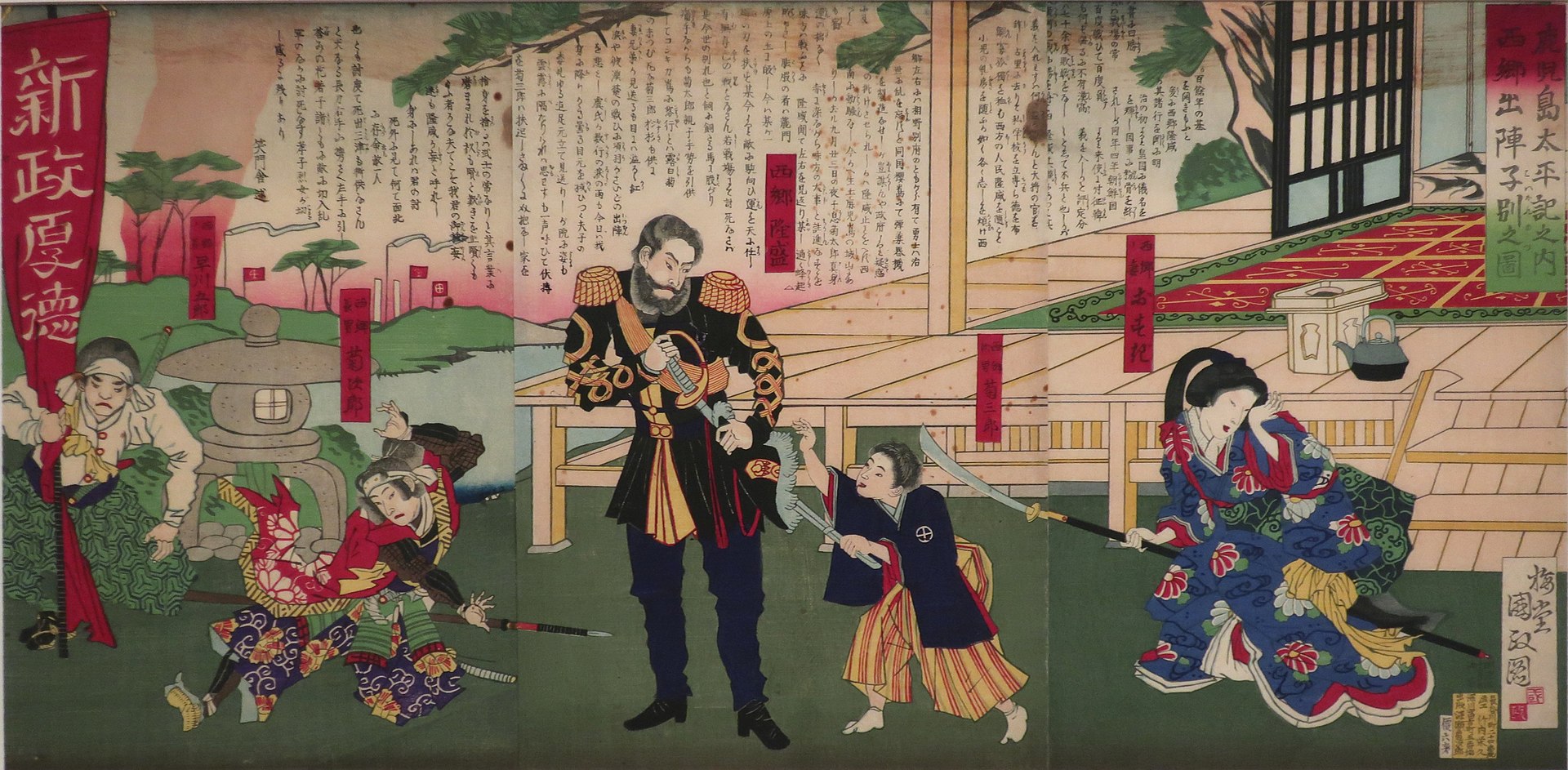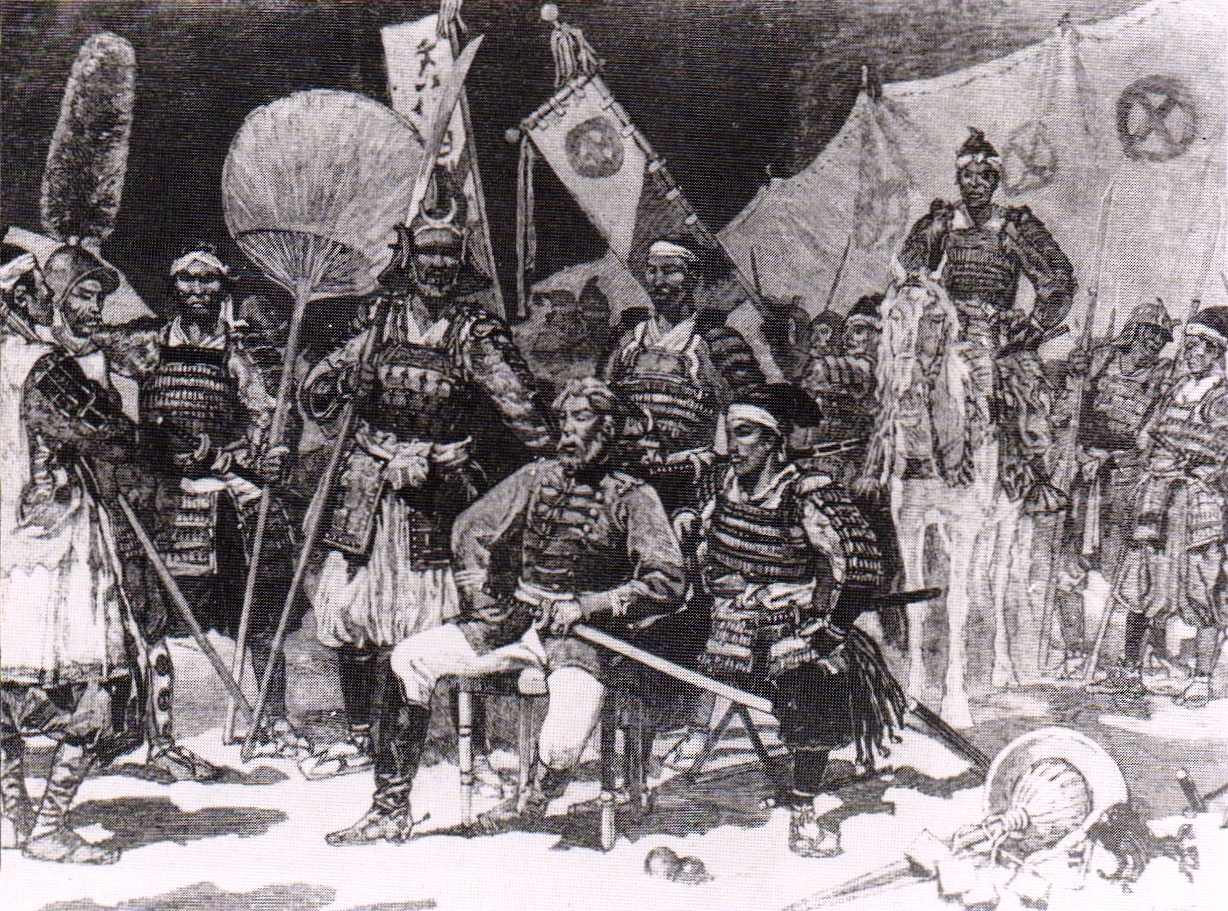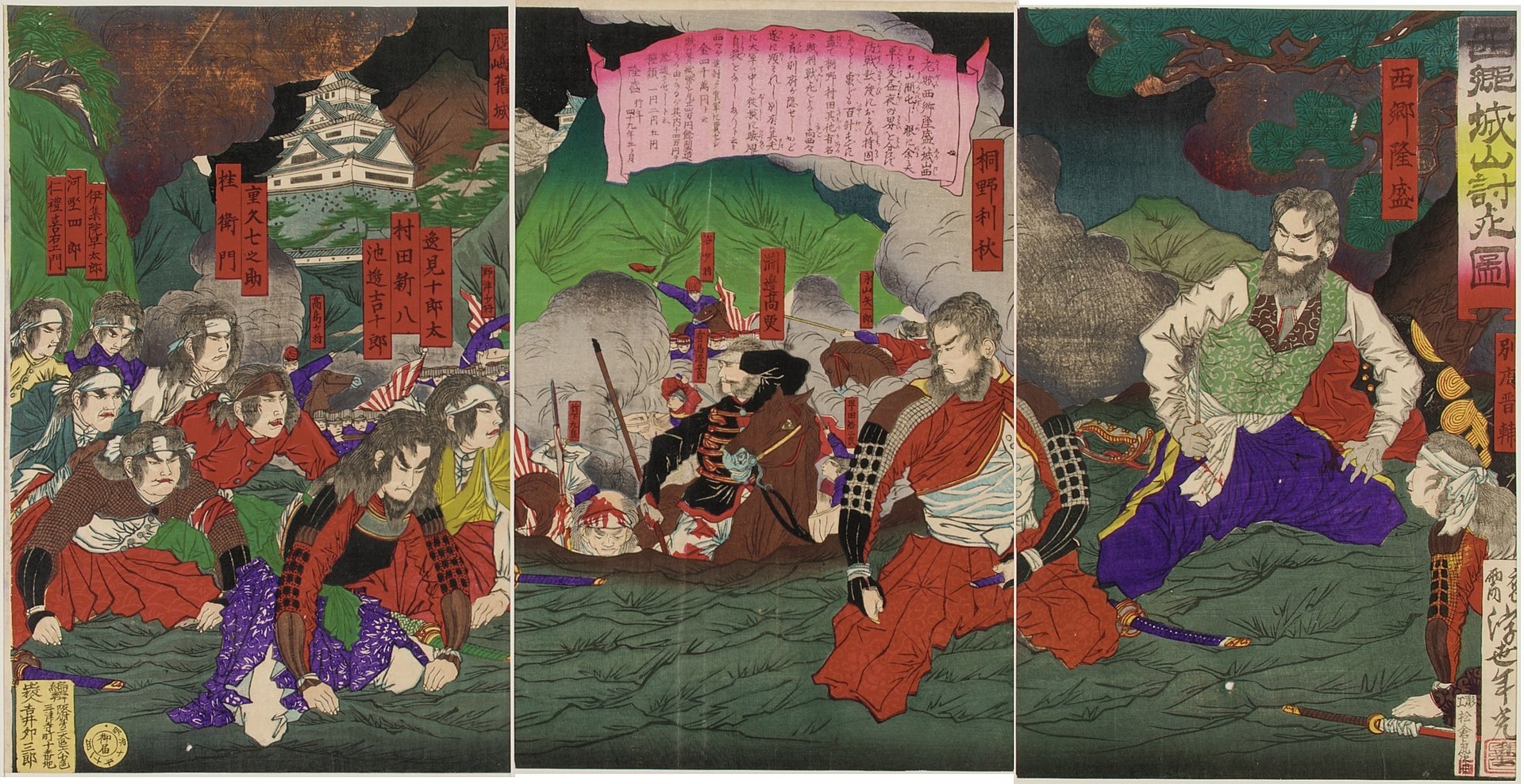Top 10 Facts about Saigō Takamori

Portrait of Saigo Takamori. COURTESY: C Nakagawa. WIKIMEDIA
Saigo Takamori who was famously known as Takanaga was a Japanese Samurai and nobleman. He was born on 23rd January 1828 in Kajiya, Kagoshima, Sastsuma Domain.
Saigo was the eldest son of the samurai squire Saigo Kichibe. The mother of Saigo Kokichi was known as Masa.
Saigo had six siblings with his youngest brother, Marshall Admiral Marquis Saigo Judo being the most renowned. Saigo’s childhood name was Kokichi and was given the name Takamori while in his adulthood.
He was popularly known for his poetry under the name Saigo Nanshu. Saigo was an influential samurai and one of the three greatest nobles during the Meiji Restoration.
He later led the Satsuma Rebellion against the Meiji government. Saigo was described by historian Ivan Morris as ‘the quintessential hero of modern Japanese history.
Here are the top ten facts about Saigo Takamori;
1. Saigo’s Intransigence Led to the Boshin War

Saigō Takamori Departing for Battle and Leaving His Children by Utagawa Kunimasa V, Meiji period, 1877, woodblock triptych, Honolulu Museum of Art, accession. Credit: Utagawa Kunimasa. WIKIMEDIA
Saigo was one among the samurai to be against the Meiji Restoration after Shogun resigned and returned power to the Emperor. He was among the vocal and vehement opponents to negotiate on getting a solution.
Saigo demanded that Tokugawa be stripped of their lands and the special status they had. This did not end well as it led to the Boshin War.
Saigo led the imperial forces to the Battle of Toba Fushimi. He, later on, led the imperial army to Edu. This led to the accepted surrender of the Edo Castle from Katsu Kaishu.
2. Saigo Retained Key Role in Establishment of Conscript Army

Portrait of Saigo Takamori by Ishikawa Shizumasa. Courtesy: Ishikawa Shizumasa. WIKIMEDIA
After the Boshin War, there was some calm over the next few years. Saigo was one of the statesmen and noblemen in this era.
Okubo Toshimichi was one of the other active and influential leaders in establishing the new Meiji government. Saigo played a major role during this period.
He was essential in the abolition of the han system. Saigo also played a major role in the establishment of the conscript army. Saigo was also left in charge of the caretaker government during the Iwakuru Mission.
3. Saigo Disagreed on the Modernization of Japan

Portrait of Saigō by Tokonami Masayoshi. Saigo Takamori in uniform. 1887 painting on canvas. Courtesy: Tokonami. WIKIMEDIA
In the 1870s, there was major modernization and influence from Western society in Japan and other areas. As one of the prominent leaders in Japan, Saigo did not agree with most of the changes being suggested.
Saigo had initially disagreed with some influence on the modernization of Japan by the West. The West had also suggested the opening of commerce with Japan.
Saigo opposed the construction of the railway network. He insisted that the money should have been spent on military modernization.
4. Saigo Demands of Japan go to War against Korea
Saigo Takamori showed his supremacy and lack of fear by how he wanted to cause war and expand Japan. In 1873 during the Seikanron debate, Saigo insisted on Japan going to War against Korea.
This was due to Korea’s refusal to recognise the legitimacy of Emperor Meiji as the Head of state of the Japanese Empire. The war calls from Saigo were also brought about by insulting treatment of Japanese envoys establishing trade and diplomatic relations.
Saigo offered to go to Korea in person and provoke them by aggravating them through insulting behaviour so that Koreans could kill him. The other Japanese leaders opposed Saigo’s plans with claims of budgetary considerations and weakness of Japan.
5. Saigo Resigned from all Government Posts and returned Home
His suggestion to create a war on Korea did not go well as he had planned. The other top Korean leaders refused to buy into his suggestion which made Saigo act swiftly.
Saigo Takamori decided to resign from all the government positions he held. This was supposed to be in protest of his war claims being turned down. He decided to return to his hometown of Kagoshima.
6. Saigo Started the Satsuma Rebellion after Resignation

Saigō Takamori with his officers, at the Satsuma Rebellion. Courtesy: French magazine. WIKIMEDIA
After returning to his hometown in Kagoshima, Saigo Takamori never backed down from his ambitions. Saigo decided to start a private military academy known as the Shi-gakko for all those faithful samurai who resigned and followed him.
The samurai led by Saigo started becoming dominant which forced the Kagoshima government to send warships to disarm them. The action from the Kagoshima government provoked an open conflict that led to the Satsuma Rebellion.
7. The Failed Siege Led by Saigo to take over Kumamoto Castle

Saigo Takamori in the retreat from Shiroyama castle, Woodblock print (nishiki-e); ink and colour on paper. Courtesy: Ukiyo Toshimitsu. WIKIMEDIA
During this era of rebel fighting against the central government led by Saigo, there were two battles; the Siege of Kumamoto Caste and the Battle of Tabaruzaka. Saigo was very confident that his samurai will take over the Kumamoto Castle.
However, Saigo underestimated the effectiveness of the imperial conscripts in defending the castle. The attempt to take over was a failure which made Saigo settle for a siege.
The battle did not go according to Saigo’s plan as the imperial government got more reinforcement which lifted the siege. Saigo’s samurai lost their lives in large numbers and some decided to retreat.
8. Saigo had Married Three Wives and had Several Children
Being one of the noblemen in Japan, Saigo had to have several wives and also sire more children. He married Ijuin Suga, Aikana and Saigo Itoko.
Saigo Takamori never had any children with his first wife. With his second wife, Saigo had two children; Saigo Kikujiro who became mayor of Kyoto City and Saigo Kikuso.
The third wife had three children; Marquess Saigo Torataro a colonel in the army, Saigo Umajiro and Saigo Torizo.
9. Saigo’s Two Brothers Killed in Two Battles
In the two wars and battles brought about by Saigo Takamori, there were several losses brought about. Two of his brothers were killed in two wars.
The younger brother of Saigo, Saigo Kichijro was killed in action in the Boshin War. Saigo Kohei, another younger brother of Saigo Takamori was killed in action in the Satsuma Rebellion.
10. The Theories of the Death of Saigo

Saigo Takamori. Photo by: Amano Jun-ichi. WIKIMEDIA
Saigo Takamori died during the battle of Shiroyama where his samurai were defeated. In one of the theories, Saigo is believed to have been badly injured in the hip.
There were no eyewitnesses to the death of Saigo Takamori. It is claimed that Saigo was injured in the thigh and then committed suicide.
Another theory explained that after the bad injury, Saigo requested a fellow citizen to help him take his life.
The legacies and great deeds of Saigo Takamori will always be remembered as he helped in the building of modern Japan.
Planning a trip to Paris ? Get ready !
These are Amazon’s best-selling travel products that you may need for coming to Paris.
Bookstore
- The best travel book : Rick Steves – Paris 2023 – Learn more here
- Fodor’s Paris 2024 – Learn more here
Travel Gear
- Venture Pal Lightweight Backpack – Learn more here
- Samsonite Winfield 2 28″ Luggage – Learn more here
- Swig Savvy’s Stainless Steel Insulated Water Bottle – Learn more here
Check Amazon’s best-seller list for the most popular travel accessories. We sometimes read this list just to find out what new travel products people are buying.









